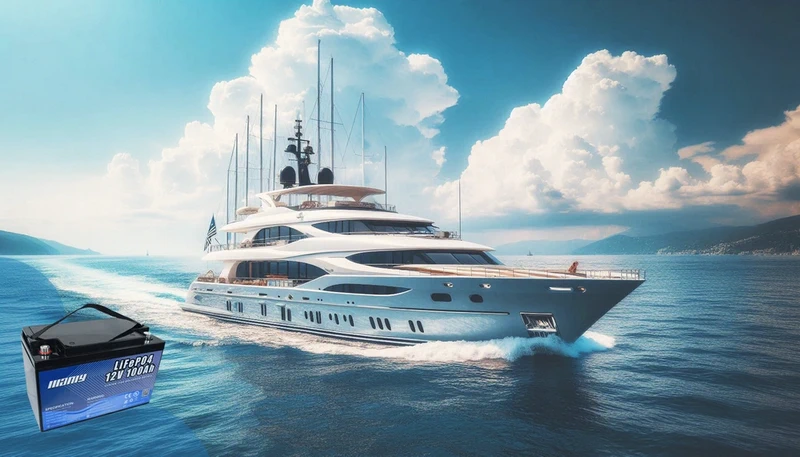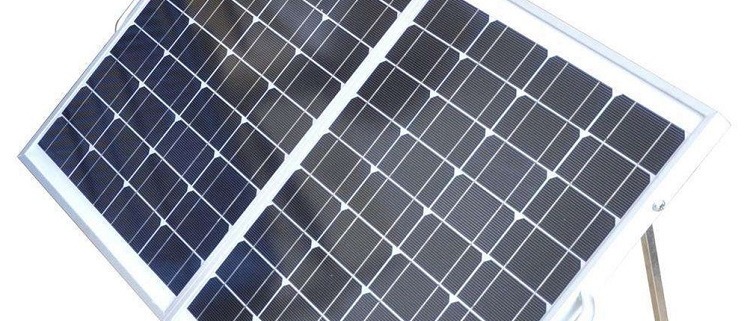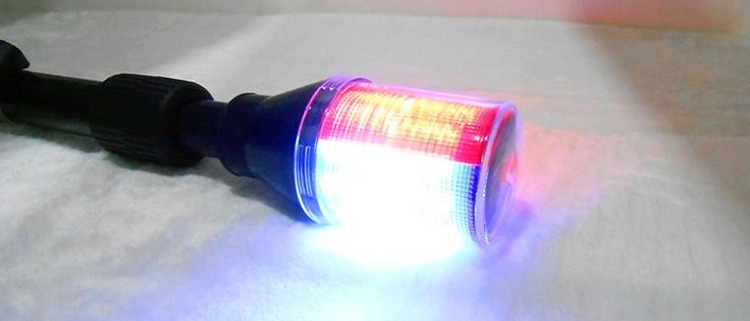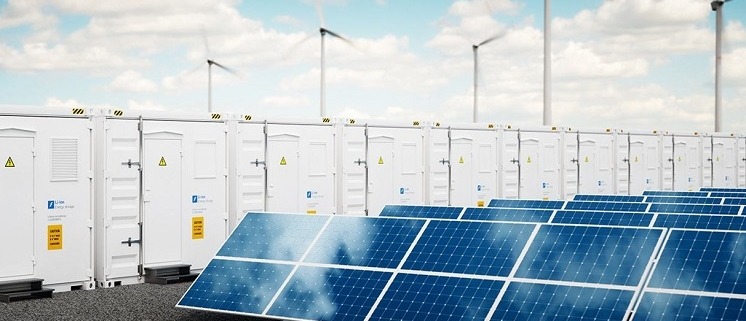Charge a Marine Battery: Step-by-Step Guide
Table of Contents
- Charge a Marine Battery: Step-by-Step Guide
- Understanding Marine Batteries
- Preparing to Charge Your Marine Battery
- Step-by-Step Guide: How to charge a marine battery
- Best Practices for Marine Battery Maintenance
- Conclusion
- FAQ
- Hot Resarch
- Structural composition of solar panels
- The role of led warning lights
- Norwegian Equinor acquires 45% of Norker Power, a British battery energy storage developer
Marine batteries are the lifeblood of any boat—they power your engine, lights, gauges, and all the essential onboard electronics. Without a healthy battery, your boat is a pretty shell on the water. In this article, we dive into the burning question: how do I charge a marine battery? We’ll explore everything from the ins and outs of battery types to a step-by-step guide on charging. Plus, we’ll compare the advantages of a marine li ion battery with those of traditional marine deep cycle batteries. Let’s get started on this exciting journey to keep your boat powered and your adventures safe!
Understanding Marine Batteries
1. Types of Marine Batteries
Not all marine batteries are created equal. When it comes to powering your boat, you typically have three choices:
- Starting Batteries: These provide that quick, powerful burst of energy to get your engine running, but they’re not built for long-term power.
- Deep Cycle Batteries: Designed for sustained power delivery, these batteries keep your lights, electronics, and other accessories humming for hours.
- Dual-Purpose Batteries: These offer a blend of starting and deep cycle capabilities, which can be handy on smaller vessels with limited space.
Most boaters prefer marine deep-cycle batteries for extended use and reliability. These batteries handle deep discharges better, ensuring their boats stay powered even during extended trips.
2. Battery Chemistry and Technology
Battery chemistry plays a pivotal role in performance and longevity. Traditional chemistries—like lead-acid, AGM, and gel—have long been the go-to options. However, a modern contender is changing the game: the marine li ion battery.
Why choose a marine li ion battery? Because it’s lightweight, lasts significantly longer, and requires minimal maintenance compared to conventional batteries. Think of it as upgrading from an old clunker to an award-winning sports car in the world of batteries. This cutting-edge technology improves performance and enhances safety and efficiency, making it a popular choice among serious boaters.
Learn more about lithium-ion battery technology on Wikipedia.
Preparing to Charge Your Marine Battery
Before you begin the charging process, a little preparation goes a long way toward ensuring safety and efficiency.
1. Assessing Your Battery’s Condition and Type
First, give your battery a thorough once-over. Check its age, inspect for any signs of corrosion, and verify the battery type. Understanding whether you’re dealing with a marine li ion battery or deep cycle batteries is crucial—it influences which charger to use and how you’ll maintain it. A well-maintained battery lasts longer and performs better when you charge a marine battery.
2. Choosing the Right Charger
Next up is selecting the correct charger. You generally have two main options:
- Onboard Chargers: Permanently installed on your boat, these chargers make it super convenient to power up as long as you have access to a standard outlet.
- Portable Chargers: These allow you to charge your battery wherever you are, which is ideal for smaller boats or when space is at a premium.
Make sure the charger you choose matches your battery’s chemistry and voltage. This step is especially important for those opting for a marine li ion battery or deep cycle batteries—using the wrong charger can lead to underperformance or even damage.
3. Safety Precautions Before Charging
Safety should always be your top priority. Here are some key precautions:
- Work in a Safe Environment: Charge your battery in a well-ventilated area and ensure the temperature is within the manufacturer’s recommended range.
- Clean Battery Terminals: Dirty or corroded terminals can interfere with the charging process, so give them a good clean before you connect anything.
- Gear Up: Wear protective gear such as gloves and eye protection to prevent mishaps.
- Follow Manufacturer Guidelines: Always adhere to the specific recommendations provided by your battery and charger manufacturers.
By taking these simple steps, you will ensure your safety and optimize the performance and lifespan of your battery.
Step-by-Step Guide: How to charge a marine battery
Let’s get into the nitty-gritty of charging your boat’s power source. Follow these steps, and you’ll power up like a pro in no time!
1. Cleaning and Inspecting Battery Terminals
Before you plug anything in, clean your battery terminals. Dirty or corroded terminals can prevent your charger from doing its job, and no one wants a slow charge on a hot day!
- Tip: Mix some baking soda with water, scrub gently with a soft brush, and wipe dry.
- Why It Matters: Clean connections ensure that every bit of energy flows efficiently when you charge a marine battery.
2. Connecting the Charger
Now, let’s hook everything up:
- Positive (Red) Cable: Firmly attach this to the positive terminal.
- Negative (Black) Cable: Connect it securely to the negative terminal.
Double-check your connections, whether using a smart charger that adjusts the current automatically or a trusty manual charger. This step is vital, especially when working with a marine li ion battery or marine deep cycle batteries. Once the cables are locked in, plug in your charger and power it up. Easy as pie, right?
3. Monitoring the Charging Process
Keep an eye on your battery as it charges—this is where modern tech shines:
- LED Indicators: These give you a quick look at the charge level.
- Smart Apps & Timers: Many chargers have apps or built-in timers to let you know when you’re full.
By actively monitoring, you prevent overcharging and ensure your battery gets the right amount of juice.
4. Disconnecting the Charger Safely
When your battery is fully charged, it’s time to disconnect—but do it safely:
- Unplug the Charger: Always start by unplugging the charger from the wall.
- Remove the Negative Cable: Disconnect the black cable first.
- Disconnect the Positive Cable: Finally, remove the red cable.
Following this order helps prevent accidental short-circuits and keeps your battery in shape.
Best Practices for Marine Battery Maintenance
Regular maintenance keeps your battery performing like a champ. Here’s how to keep those power levels up!
1. Maintenance Tips for Prolonging Battery Life
- Routine Inspections: Check for any signs of corrosion or wear on the terminals.
- Clean Regularly: A little cleaning goes a long way in ensuring your connections are solid.
- Water Topping: Top up with distilled water when needed for lead-acid batteries.
By following these habits, you’ll always be ready to charge a marine battery and hit the water confidently.
2. Optimizing Charging Cycles
Different batteries have different needs:
- For a marine li ion battery: Enjoy the benefits of minimal maintenance and the ability to handle deeper discharges.
- For marine deep cycle batteries: Stick to regular, shallow discharges to keep them healthy over the long haul.
Tailoring your charging cycle to the specific battery type maximizes performance and extends lifespan.
3. Troubleshooting Common Issues
Even the best-maintained batteries can run into issues. Watch out for:
- Overcharging: This can overheat your battery and cause damage.
- Undercharging: Leaves your battery underpowered.
- Terminal Corrosion: Hinders efficient energy transfer.
If you notice any problems, check your charger settings and ensure you use the right equipment for your battery type.
Conclusion
1. Recap of Key Points
We’ve broken down how to charge a marine battery step by step—from cleaning and connecting to monitoring and safe disconnection. Each stage is crucial for keeping your boat’s power system in peak condition.
2. Final Tips for Maintaining Both Marine li ion battery and marine deep cycle batteries
Whether you opt for the cutting-edge marine li ion battery or the reliable marine deep cycle batteries, proper care and regular maintenance are your best friends. Tailor your charging habits to your battery’s specific needs, and you’ll enjoy award-winning performance on every trip.
3. Encouragement to Follow Best Practices for Reliability on the Water
Stick to these best practices, and you’ll be cruising with confidence. Keeping your battery in prime condition means fewer hassles and more time enjoying your time on the water. Let’s keep those adventures rolling, shall we?
For more detailed battery care tips and industry insights, check out reputable sources like the U.S. Department of Energy or Wikipedia’s battery technology page. Happy boating!
FAQ
1. Can you charge a marine battery with a regular charger?
While you technically can, it’s not recommended. Marine batteries require a charger that matches their specific chemistry and voltage. A regular charger may not provide the proper charging profile, leading to undercharging, overcharging, or even damage over time.
2. What is the best way to charge a boat battery?
The best way is to use a charger specifically designed for your battery type. Follow a step-by-step process: clean and inspect the terminals, connect the positive and negative cables correctly, monitor the charging process using bright indicators, and disconnect safely when fully charged. This ensures efficiency and longevity.
3.What kind of charger do I need for a marine battery?
You need a charger that is tailored to your battery’s chemistry—whether it’s a marine li ion battery or marine deep cycle batteries. Look for chargers with the correct voltage, charging algorithm, and safety features like automatic shut-off and intelligent monitoring for optimal performance.
Hot Resarch
Marine Battery Battery Manufacturer Lithium Battery
Hello
Solar panel is a device that directly or indirectly converts solar radiation energy into electrical energy through photoelectric effect or photochemical effect by absorbing sunlight. The main material of most solar panels is “silicon”.
Structure and composition
1) Tempered glass
Its function is to protect the main body of power generation (such as cell), and the selection of light transmission is required:
1. The light transmittance must be high (generally above 91%);
2. Ultra-white tempered treatment
2) EVA
Used to bond and fix the tempered glass and the main body of power generation (such as cell). The quality of the transparent EVA material directly affects the life of the module. The EVA exposed to the air is easy to age and yellow, which affects the light transmittance of the module, thereby affecting In addition to the quality of EVA itself, the power generation quality of the module is also very affected by the lamination process of the module manufacturer. Component life.
3) Cells
The main function is to generate electricity. The mainstream in the main power generation market is crystalline silicon solar cells and thin-film solar cells, both of which have their own advantages and disadvantages.
Crystal silicon solar cells have relatively low equipment costs, but the consumption and cell costs are high, but the photoelectric conversion efficiency is also high, which is more suitable for power generation under outdoor sunlight; thin-film solar cells have relatively high equipment costs, but consume and battery The cost is very low, but the photoelectric conversion efficiency is more than half that of the crystalline silicon cell, but the low light effect is very good, and it can generate electricity under ordinary light, such as the solar cell on the calculator.
4) Backplane
Used for sealing, insulation, and waterproofing (usually TPT, TPE and other materials must be resistant to aging. Most component manufacturers have a 25-year warranty. Tempered glass and aluminum alloy are generally okay. The key is whether the backplane and silica gel can achieve Require.)
5) Aluminum alloy protective laminate
Play a certain sealing and supporting role
6) Junction box
It protects the entire power generation system and acts as a current transfer station. If the component is short-circuited, the junction box will automatically disconnect the short-circuit battery string to prevent the entire system from being burned. The most important thing in the junction box is the selection of diodes. Depending on the type of cell in the assembly, the corresponding diodes are also different.
7) Silica gel
Used to seal the junction between the component and the aluminum alloy frame, the component and the junction box. Some companies use double-sided tape and foam instead of silica gel. The domestic use of silica gel is simple, convenient and easy to operate, and the cost is very low.
Warning lights, as the name suggests, play the role of warning reminders. They are generally used to maintain road safety, effectively reduce the occurrence of traffic safety accidents, and prevent potential unsafe hazards. Under normal circumstances, warning lights are usually used in the development of police vehicles, engineering vehicles, fire trucks, emergency vehicles, prevention management vehicles, road maintenance vehicles, tractors, emergency A/S vehicles, and mechanical equipment.
Under normal circumstances, warning lights can provide products of various lengths according to vehicle types and uses, and have a structure of lampshade combination. When needed, the lampshade on one side can be combined with composite colors. In addition, warning lights can also be divided into light bulbs, LED flashes, and xenon tube strobes according to different light sources. Among them, the LED flashing form is an upgraded version of the bulb turning light, which has a longer service life and more energy-saving. Lower heat. What is the use of warning lights in these situations?
For example, for construction units, warning lights should be turned on during road construction, especially in the case of unknown road conditions at night, which can easily cause some accidents. Unfamiliar people can easily trip and cause traffic jams. , So it is very necessary and necessary to set up warning lights to play a warning role. Secondly, the same is true for cars driving on the road. It is very common that some problems occasionally occur during long-term driving. In the case of having to park on the road, in order to ensure safety, the driver needs to place a hazard warning on the vehicle in Fujian. Lights to remind passing vehicles to notice new obstacles ahead, slow down and drive safely. High-performance warning lights can expand the visual range of hazard warning models, allowing other driver groups to see this reminder more clearly. So try to use warning lights with good performance. In addition, when security guards are patrolling fixed security posts and police motorcycles, when criminals want to commit illegal incidents, they will be affected and prevent illegal actions. People who are injured can seek help in time, and a wider range of criminals will be affected. The role of warning and restraint can effectively control and reduce crimes and maintain social stability. LED strobe lights are installed in the community and on the sidewalks, so you can see it with more attention and protect yourself and your family better.
Of course, it is no exception for those who like to travel by bicycle. If you want to make it easier on the way, or if the tire is blown, you will have to stop the car. At this time, it is a very dangerous thing to park in a bend, and it is easy to cause a traffic accident. So this kind of more convenient LED warning light plays a key role. And not only is it a roadside warning, it can also be used as a lock when necessary.
Norwegian oil and gas giant Equinor recently announced that it has acquired a 45% stake in Norker Power, a UK utility-scale developer of energy storage systems and grid services.
In addition to acquiring the company’s equity, the two companies have reached an agreement on a strategic cooperation, which will give Equinor the opportunity to directly participate in the energy storage project being deployed by Norker Power.
Equinor said that it hopes to meet the increasing and stable demand of the electric power industry by deploying battery energy storage systems and to profit from it. In addition, the deployment of battery energy storage systems in the UK’s existing offshore wind power asset portfolio can increase returns.
Olav Kolbeinstveit, Senior Vice President of Electricity and Marketing of Equinor’s Renewable Energy Division, said: “Large battery energy storage systems can be charged when renewable energy is sufficient and discharged during peak power demand. This will enable companies to balance the market around , The need to stabilize the grid and improve supply security to build profitable services. The deployment of battery energy storage systems can enable the UK to make fuller use of renewable energy power.”
Noriker Power has developed and deployed battery energy storage systems with a total installed capacity of 250MW or more in the UK, and plans to deploy battery energy storage systems of 500MW or more, hybrid energy and stable grid service projects.
Noriker Power, headquartered in Gloucester, UK, will use Equinor’s investment to enhance its project development platform. These include engineering development, control system innovation and algorithm optimization.
Equinor will buy the shares currently held by Gresham House, a British asset management and investment group, and Gresham House Energy Storage Fund, which is listed on the London Stock Exchange. The two companies jointly own 15% of Norker Power’s shares. Gresham House initially acquired a 5% stake in the battery energy storage developer in August 2019.
Gresham House also acquired a ByersBrae battery energy storage project with an installed capacity of 30MW from Norker Power in April this year, with a total value of £15.6 million (US$20.6 million).






